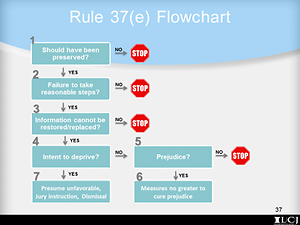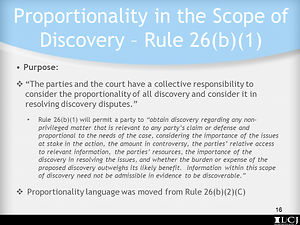
A Meaningful Class Action Defense Tool?
On May 16, 2016 the High Court finally spoke on Spokeo, the long anticipated case involving what injury is necessary to sustain Article III standing in federal court. Some predicted a blow to consumer protection and privacy related class actions in which neither the class representative nor the class as a whole suffered anything but a technical federal statutory violation without real harm.
In the underlying case, Thomas Robins claimed that Spokeo published false information about him on its search engine site, in violation of his rights under ...

Class Certification of TCPA Claims in Sandusky Wellness Center, LLC v. MedTox Scientific, Inc.
Alexander Bain, a Scotsman, worked on an experimental fax machine in the 1840’s, synchronizing the movement of two pendulums through a clock to scan messages on a line by line basis. Bain’s work resulted in a patent issued May 27, 1843 for “improvements in producing and regulating electric currents and improvements in timepieces, and in electric printing, and signal telegraphs.” The rudimentary fax machine preceded Alexander Graham Bell’s invention of the telephone. Who ...

Unleashing a Trade Secret Misappropriation Federal Private Right of Action
President Obama is poised to sign a bill passed unanimously by the Senate and House Judiciary Committee. What issue of the day could possibly secure such bipartisan support in a tumultuous presidential election year? One that even Donald Trump and Bernie Sanders could agree upon.
The emergence of relatively anonymous cyber threats and persistent state-sponsored economic espionage, together with breaches of confidence and traditional bribery, corrupt employee, and misrepresentation schemes, simply ...

Garretson Resolution Group (Garretson) conducted a meeting in January, 2015 attended by HeplerBroom, other members of the asbestos defense bar, and counsel for asbestos plaintiffs. At the meeting, it introduced its new Asbestos Malignancy Alternative Resolution Process (which Garretson refers to as the AMP). Garretson stated that several years ago, it reached an agreement with the Centers for Medicare and Medicaid Services (CMS) pertaining to settlement of non-malignant asbestos injury cases. Garretson said that this earlier agreement was designed to streamline the ...
Now that the amendments affecting the rules regarding the bringing of a case and case management procedures, as well as those changes to the scope of discovery have been discussed, the final piece of this guide addresses the changes to preservation requirements and the new rule governing sanctions—or remedies—for ESI spoliation. Rule 37(e) has been completely redesigned, and now functions as the sole authority for dealing with lost or destroyed ESI. As a result, the amended rule has broad implications not only for the legal community but the business community, too.
Changes to ...

The Internet, like so many things in life, is not free. The content we consume must be paid for and that usually means viewing advertisements. But as our software and browsers become increasingly adept at blocking pop-ups and banner ads, advertisers have found themselves going native. “Native advertising” refers to paid advertisements that are designed to look like a publisher’s own editorial content. Native advertising is attractive to both the publishers and the advertisers. Native ads frequently command a hefty premium over traditional ads (a boon to the publisher) and ...
Out with the old, in with the new. It’s time to scrap “reasonably calculated” in favor of “proportionality.” This is because the amended Rule 26 has deleted the directive that “[r]elevant information need not be admissible at the trial if the discovery appears reasonably calculated to lead to the discovery of admissible evidence.” Instead, the scope of discovery—and thus, your responses and objections—are now defined by what is “proportional to the needs of the case”. This change, as well as other amendments to Rules 26 and 34, are outlined and discussed in ...
The Amendments are officially upon us. On December 1st, the changes to Rules 1, 4, 16, 26, 30, 31, 33, 34, 37, 55, and 84 of the Federal Rules of Civil Procedure became law. For federal-court litigators, these changes included key amendments that are highlighted in this three-part guide. While some changes are as simple as changing the language of your discovery objections, others incorporate fundamental shifts in approaching pre-trial discovery that affect every stage of the pre-trial process.
In light of these important changes in the procedural rules governing federal ...



